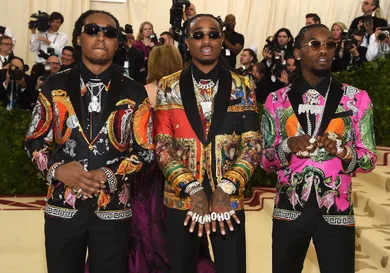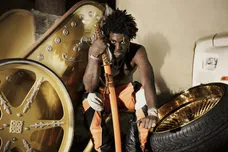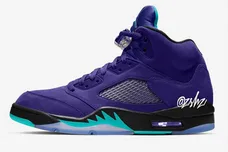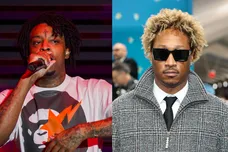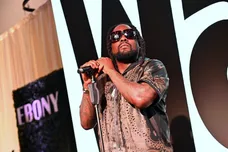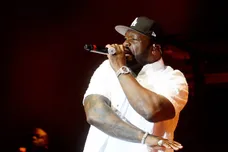“Walk-it. Like-I. Talk-it. / Walk-it. Walk-it. Like-I. Talk-it. Woo!” This hook, from Migos’s banger "Walk It Talk It" is sure to get stuck in your head for days. But why is it so damn catchy? Why do Migos always rap like that? What goes into the making of their signature flow? To figure that out, we need to go back to the origins of hip hop, and pick up some music theory along the way.
In the old school days of the 90s, the majority of hip hop beats used slower tempos (around 85-100 beats per minute) and samples of instruments played by musicians (who, because they were human, usually played slightly off the beat). Live drum kits, lifted from 70s funk songs like James Brown’s "Funky Drummer," were a mainstay at that time. These kinds of beats, as in the case of Tribe Called Quest’s "Can I Kick It," Biz Markie’s "Just a Friend," and Nas’s "The World is Yours," were best suited for looser, more relaxed flows. The vibe was more laid-back and rapping was more conversational.
As machine-made trap music rose in popularity in the mid-2000’s, beats became faster (120-140 beats per minute) and more quantized, meaning that producers would automatically adjust every sound in the song to be perfectly on time with the beat. Metro Boomin’s beats, for example, are not loose and relaxed but just the opposite: fixed, precise, and fast. Bulky metal hi-hats were replaced with thin, clicky trap hats. Resonant acoustic snare drums were swapped for high-pitched electronic claps. These sounds cut through the beat with surgical precision, then immediately disappear as soon as they came.
So what kind of rapper is best suited for this mechanical-sounding music? The kind of rapper who spits raps like quick jabs in a boxing ring: one or two short, punctuated syllables at a time. That is exactly what Offset, Takeoff and Quavo specialize in: words that leave as quickly as they arrive, accenting the beat in quick bursts. “Walk-it. Like-I. Talk-it. / Walk-it. Walk-it. Like-I. Talk-it. Woo!” Their rapping is less like a smooth conversation, as in the style of Q-Tip or Lauryn Hill, and more like a chant that could be shouted out one or two words at a time. This sharp, choppy style is perfectly suited for the stiff, tight beats of trap.
While an old school flow usually emphasizes the beat of the song with some of its syllables, the Migos flow uses almost every syllable to emphasize the beat. Biz Markie, for example, raps with a relaxed cadence on "Just a Friend": “Have you ever met a girl that you tried to date / But a year to make love she wanted you to wait?” If Migos were to rap this line they might deliver it more like, “HAVE-YOU. / EVER. / MET-A / GIRL. (GIRL!) / THAT-YOU. / TRIED-TO. / DATE. (WOO!)” One of the most important elements of the Migos flow is the time in which they’re not rapping – the empty space between syllables that gives their raps its distinct staccato rhythm.
If you don’t remember from high school band class, staccato is a formal style of playing music. It is represented on sheet music as a dot on top of a note, indicating to play that note for a short duration. It dates back to the 17th century and can be heard in songs like Joachim Anderson's "24 Etudes for Flute, Op. 33, Study No. 15."
Notice how in that song the flute plays short, spiky puffs instead of long, drawn-out notes. This style was later adopted by James Brown to define what came to be known as funk music: loud horns playing percussive stabs of notes that emphasized the punch of the drums. It’s no coincidence that around this time came the birth of the robot dance, Jackson 5’s “Dancing Machine,” and James Brown’s own “Sex Machine” – the funk sound was so jerky that it felt almost mechanical, even before actual machines started playing it. When that did happen, and machines did start to take a prominent role in music, the concept of ‘playing every instrument like a drum’ was brought to the next level with the invention of the sampler – allowing music producers to take any sound they wanted and play it percussively using a drum pad. The sampler gave birth to hip-hop and its electronic sub-genre, trap.
And with trap, came Three Six Mafia, Gucci Mane, and eventually Migos – with their distinct choppy flow perfectly fitted for the quantized exactly-on-time electronic drums they were rapping over. Other rappers followed suit with their own variations on the staccato flow, including Playboi Carti (with his signature “What! What? What!” adlibs), Rico Nasty (“Diamonds. In-my. Dental. Crazy. In-my. Mental.”) and of course, Cardi B (“LOOKIN. LIKE-A. QUARTER. LICK.”). Since the beginning of hip hop, rhymers have responded to what their DJ’s chose to lay down. As music production technology and styles continue to evolve, so will rap flows. Migos listened to the electronic sounds of producers like Zaytoven, Sonny Digital, and Honorable C-Note, then adopted flows best suited for that musical style. With this year’s success of Culture II, the massive popularity of Migos is showing no signs of stopping.
